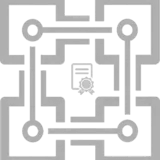
Supply chain Management
By definition, supply chain management constitutes the management of goods and services progress path, including the transfer and deposit of natural resources (raw materials), of ongoing processes backlog and of completed products from genesis to use. Supply chain logistics involve the design, planning, execution, control, and monitoring of goods and services journey activities adding value to the final product. Eventually built on intercommunication business networks, supply chains manage to provide the final product to the consumers through a series of actions, such as raw material extraction, manufacturing to build the product, distributing the product to middle-men (wholesalers, retailers), and allocating the product to the public. They are called supply chain actors.
To begin with, the starting point of a supply chain is constituted from the extraction of raw materials (natural resources) and how they are firstly processed (per-processed) by the suppliers or vendors in order to be delivered to the next stage.
The next stage is called manufacturing where the process of converting the raw materials into products that are ready to sell takes place.
Following this, the constructed products are passed to the distributors who are responsible for allocating them to multiple different intermediaries, such as wholesalers and retailers. The distributors also maintain an active inventory of the products since the prior are connected with the suppliers. Subsequently, the wholesalers do not sell products directly to the public, but to other retailers instead, whereas the retailers dispose the purchased products to end users.
Lastly, the consumers are the ones who purchase or receive goods or services for personal needs or use and not for business purposes of resale or trade.
Blockchain Implementation

Blockchains are regarded as public (and lately also private) ledgers containing transactional data within their decentralized data structures, which form a series of tightly connected blocks. Asymmetric cryptography and distributed consensus algorithms are being deployed for achieving ledger consistency, data integrity, auditability, non-repudiation, and authentication as part of the basic security primitives. The distributed and decentralized nature of blockchains makes them immutable in the sense that transactions cannot be tampered once they are officially validated by the peers of the network and registered in the block of the chain. At the same time, reliability and robustness are ingredients that constitute blockchains as highly trusted platforms implemented on open, trustless networks of peers.
In our case, each actor submits transactions on the blockchain network in a specific way, depending on the completed activity. In the raw materials step, the suppliers that pre-process the natural resources are submitting transactions on the ledger concerning that initial process. These transactions include tags such as raw material name, quantity, quality, origin geo-location, and others. The moment the raw materials are starting their journey to manufacturer, the appropriate transactions are submitted. In this manner, every network party can verify important details about the specific raw material they have received or that their product is made from.
Similarly, on the manufacturing stage, the manufacturer has a similar interaction with the blockchain and the next chain participant. The manufacturer is able to validate crucial information about the natural resources they collected by reading and verifying all the tags the latter includes in their transactions, and then, proceed to the proper execution of the manufacturing step. New transactions with new information tags, such as manufacturer name, field experience and others, are submitted after the completion of the stage. Following this, the products are handed to the distributors.
The distributors manage to sell the products to wholesalers and retailers. This process is represented by blockchain transactions that display important data tags, such as the merchant and customer address, exchange amount, product raw material quality, and others. The distributors task is defined as to sell products to middle-men, which means not end user. At this point, as in every step of the supply chain, the distributor (generally every stage party) can check valuable tag information about the product progress route until that stage; information such as the raw material origin geolocation, the manufacturer company popularity, the distributor name, and others.
Subsequently, when a distributor delivers the product to a wholesaler by submitting a corresponding transaction, the latter acts in a similar way. They check the transaction tags for extra data and then execute their selling to the next wholesaler or retailer company and submit a new transaction. The same applies to the retailer organizations.
Lastly, the end user receives the final product followed by a submitted transaction (with appropriate tags included) and is able to check and verify its every aspect from the beginning of its supply chain journey until that moment.
Some of the questions that we can answer via introduction of blockchain are as follows:
Clothing / garments:
In their manufacturing / weaving, was child labor, slavery, or exploitation involved?
Diamonds:
Where was it mined, and does this diamond in any way influence / help terrorism?
Farm produce:
Where and how was it grown? What were the fertilizers or chemicals used?
Meat products:
How and where were the animals raised? How hygienic and healthy were they?
Automotive:
What are its components, and are all of them traceable till the raw materials?
Electronics:
How good are the components for the environment, and what will happen after I dispose of them?
Software products:
Can the IP be traced back and its authenticity checked till its source?
Furniture:
From where is the timber sourced? Are we damaging the ecology by using this product?
Paper:
Can I trace its origin to the forests and trees?
Plastic:
What happens to it once we dispose it off?
Cosmetics:
Was animal testing done?

Leave a Reply